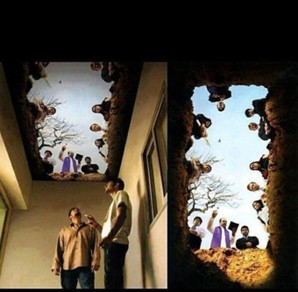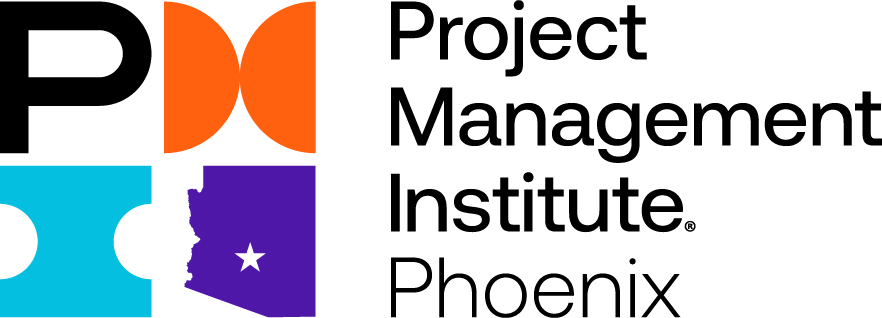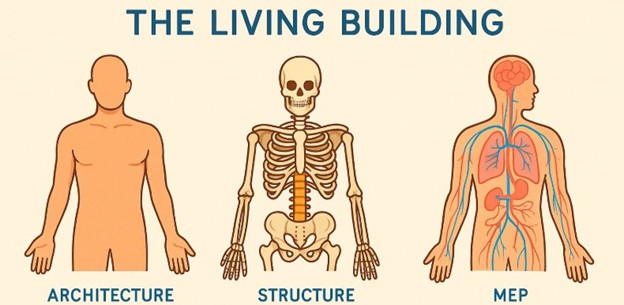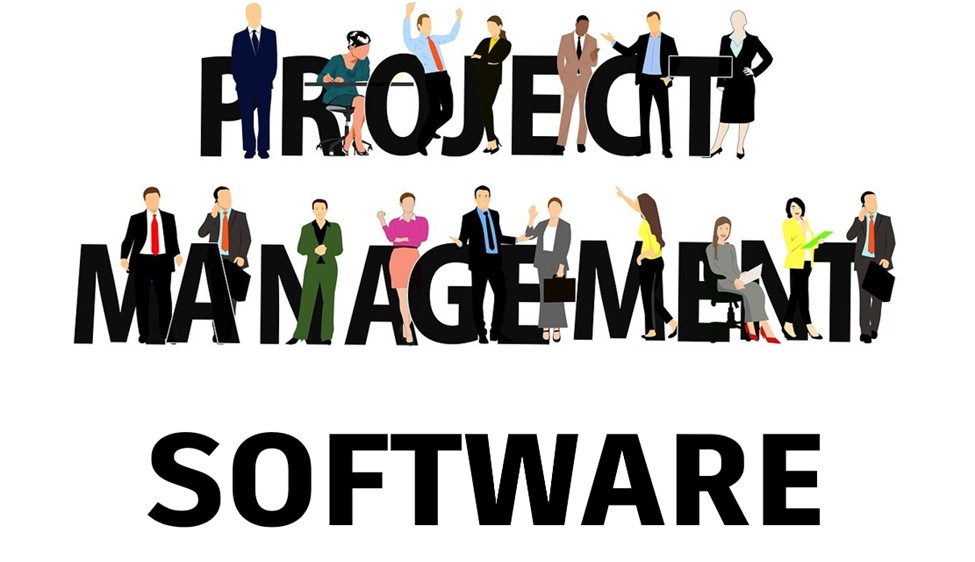Article #46: Anamorphic Art: The Convergence of Architecture and Art in Commercial Designs

Headings in this article:
- Personal Reflection on Anamorphic Art
- Introduction to Anamorphic Art
- The Principles of Anamorphism
- Anamorphic Art in Architecture
- Integration of Anamorphic Art in Commercial Design
- Stakeholders' Integration of Anamorphic Art
- Challenges and Considerations in Anamorphic Design
- The Future of Anamorphic Art in Urban Spaces
- Conclusion
- Bibliography and Suggestions for Further Reading
Personal Reflection on Anamorphic Art
Anamorphic art captivates me with its unique ability to transform ordinary spaces into extraordinary experiences. For instance, during a visit to the "3D Street Art" festival in Chicago, I stumbled upon a stunning mural that appeared to create the illusion of a giant, cascading waterfall on the pavement. As I moved around the installation, the perspective shifted, and the artwork seemed to pop off the ground, drawing in crowds of onlookers who eagerly posed for pictures. This experience highlighted how anamorphic art not only beautifies urban landscapes but also invites interaction, deepening the connection between art and the viewers. Similarly, the striking anamorphic murals created by artist John Pugh, such as those in California, transform building facades into intricate optical illusions, making everyday structures feel like portals to another world.
The integration of anamorphic art into commercial spaces further enhances its appeal, as seen in the striking works created for advertising campaigns. For example, the Coca-Cola mural in San Francisco featured an eye-catching anamorphic design that cleverly played with perspectives, encouraging passersby to engage with the brand in a fun and memorable way. While I appreciate the creativity behind these marketing tools, I sometimes question whether commercial intent diminishes the artistic integrity of the works. However, an example that resonates with me is the interactive art installation by artist Kelsey Montague, who creates large-scale wings that invite people to pose and share their photographs on social media. This blending of art and commerce showcases how anamorphic installations can spark curiosity and create fascinating experiences, reshaping our perceptions of familiar environments. As I continue exploring new anamorphic pieces across different cities, I am excited about their potential to inspire dialogue and transform urban spaces, reminding us of art's power to provoke thought and alter reality.
Introduction to Anamorphic Art
Anamorphic art is a unique visual form that creates an optical illusion, forcing the viewer to perceive objects in a distorted way until viewed from a specific angle. This technique dates back to the Renaissance, when artists began to experiment with perspective to challenge viewers' perceptions of reality. The term "anamorphosis" comes from the Greek words "ana," meaning "back," and "morph," meaning "form." Artists like #Hans Holbein the Younger and Leonardo da Vinci utilized early forms of anamorphism in their works, creating altered perspectives that would appear coherent only from particular viewpoints. This initial exploration established a foundation for the intricate and imaginative designs that would follow in both traditional and contemporary art.
The origins of anamorphic art can be traced to various traditional art forms, including murals, installations, and even practical applications in architecture. As perspective became a crucial element of Renaissance art, artists sought innovative methods to integrate visual complexity and depth into their works. This trend extended to street art and public installations in modern times, where artists embrace anamorphism to captivate audiences and encourage interactivity. By blending historical techniques with contemporary styles, today's anamorphic artists continue to push the boundaries of how we perceive and engage with visual space, making the art form relevant and exciting in our current cultural landscape.
The Principles of Anamorphism
1. Depth Perception: Depth perception refers to the visual ability to perceive the world in three dimensions and judge distances accurately. Anamorphic art plays with this perception by manipulating shapes and lines so that they appear distorted and warped when viewed from most angles, revealing their true form only from a specific vantage point. This engages the viewer in an active experience, as they must physically move to discover the artwork's intricacies.
2. Perspective: Perspective is the technique used to create the illusion of depth on a flat surface. Anamorphic artists apply distorted perspectives, which rely on linear perspective principles and vanishing points to render images that appear three-dimensional from a certain viewpoint. This experimentation with perspective challenges the conventional understanding of space and encourages viewers to reconsider their immediate perceptions.
3. Techniques Used in Creating Anamorphic Art:
a). Grid Method: Artists often use a grid system to map out the composition, allowing them to maintain proper proportions when distorting the image. This technique serves as a guide to ensure that, when viewed from the correct angle, the artwork comes together cohesively.
b). Projection: Some modern anamorphic artists utilize projectors to cast an image onto a surface. They then trace the distorted outline to create a piece that appears accurate when viewed from the intended location. This method allows for more elaborate and precise designs.
c). Materials and Mediums: Anamorphic art can be executed using various materials, including paint, chalk, or digital projections. Street artists may use 3D chalk for temporary installations, while others might employ permanent materials like paint on walls, allowing for various expressions of this art form.
d). Interactivity: Many anamorphic artists create pieces that encourage viewer interaction, enabling audiences to step into a designated spot to fully appreciate the illusion. This interactive aspect enhances the engagement and impact of the artwork, transforming it into a shared experience.
Integration of Anamorphic Art in Commercial Design
In an increasingly competitive advertising landscape, standing out is paramount for brands seeking consumer attention. Anamorphic art, with its ability to create captivating three-dimensional illusions from specific viewpoints, offers a creative solution for commercial design. By integrating this innovative art form into their branding and advertising strategies, businesses can transform ordinary spaces into engaging visual narratives that invite consumer interaction. As I delve into the applications and impacts of anamorphic art in commercial design, I'll uncover its potential to enhance brand identity and forge deeper connections with audiences.
1. Enhancing Brand Identity
Businesses are increasingly using anamorphic art to create a distinct brand identity. This artistic approach can reinforce brand values and messages by embedding them in creative visuals. When artists illustrate a brand's story through anamorphic designs, they offer a unique interpretation that resonates with consumers. This not only differentiates the brand in a competitive market but also creates a stronger emotional connection with the audience.
2. Attention-Grabbing Advertising
Anamorphic art opens new avenues in advertising by creating stunning visual displays that capture attention. Unlike traditional advertisements, anamorphic designs often draw viewers' curiosity due to their unconventional form. Effective placement in high-traffic areas, such as shopping malls, airports, or city streets, ensures that the art engages a diverse audience, prompting them to interact with the display and increasing brand recognition.
3. Interactive Experiences
One of the most compelling aspects of anamorphic art is its potential for interactivity. Brands can combine these artworks with technology, such as augmented reality (AR), to create immersive experiences. For example, consumers can use their smartphones to scan an anamorphic installation, allowing them to see hidden animations or additional content. This interactivity not only entertains but also encourages consumers to share their experiences on social media, further amplifying the brand's reach.
4. Social Media Appeal
In today's digital age, memorable visual content is crucial for a brand's social media strategy. Anamorphic art installations, with their unique perspectives and intriguing visuals, offer perfect opportunities for photo-ops. Businesses are capitalizing on this by encouraging customers to photograph themselves with these installations and share their experiences online. This user-generated content can effectively enhance brand visibility and engagement across various social media platforms.
5. Event Activation
Anamorphic art finds extensive applications in event marketing. Brands often use it to create immersive environments that engage attendees. For product launches, exhibitions, or trade shows, these captivating artworks can act as focal points, drawing in crowds and prompting conversations. The memorable nature of these installations increases the likelihood of attendees recalling the brand in the future.
6. Evolving Consumer Engagement
With consumers increasingly favoring brands that offer interactive and engaging experiences, anamorphic art plays a significant role in evolving consumer engagement strategies. Its ability to evoke curiosity and wonder encourages consumers to interact with the brand in deeper ways. This engagement can lead to enhanced consumer loyalty and advocacy, resulting in increased sales and long-term brand loyalty.
Stakeholders’ Integration of Anamorphic Art
The integration of anamorphic art into architectural designs, especially within commercial settings, creates a unique intersection between creativity and functionality. Effective stakeholder engagement is vital to ensure that this integration is seamless and beneficial for all parties involved. Here's how various stakeholders contribute to and enhance the incorporation of anamorphic art:
1. Artists and Designers
Artists specializing in anamorphic art play a crucial role in the initial conceptualization phase. Their creative vision and understanding of three-dimensional space allow them to develop designs that are visually captivating and purposefully aligned with architectural elements. Collaboration with architects ensures that the art complements the structure while enhancing the user experience.
2. Architects
Architects work closely with artists to explore the spatial implications of anamorphic art. They analyze how these artworks can enhance functionality, promote engagement, and influence movement within a commercial space. By coordinating design elements and considering factors such as lighting and perspective, architects help integrate art harmoniously into the architecture.
3. Clients and Business Owners
Clients, including commercial property developers or business owners, are vital stakeholders whose vision and objectives shape the integration process. Their input regarding brand identity, target audience, and desired impact informs the direction of the project. Engaging clients early ensures that the anamorphic art aligns with their commercial goals and resonates with their customer base.
4. Urban Planners and Local Authorities
Local authorities and urban planners play a significant role in the approval and compliance of aesthetic projects within urban environments. Their guidelines and regulations can influence the feasibility of displaying large-scale anamorphic artworks. Engaging with these stakeholders early on enables designers to navigate bureaucratic hurdles effectively and ensures that the project aligns with community standards and vision.
5. End Users
End users, including the public and customers, ultimately interact with the final product. Their perceptions and experiences are essential to the success of an anamorphic art installation. Gathering feedback from potential users through surveys or focus groups can provide valuable insights into how art influences their experience of the space, ensuring that it meets their needs and expectations.
6. Project Managers
Project managers oversee the entire integration process, coordinating between artists, architects, clients, and other stakeholders. They ensure that timelines, budgets, and quality standards are met while fostering communication among all parties involved. Their role is crucial in facilitating collaboration and managing any challenges that arise during the integration process.
Examples of Anamorphic Art in Architecture Design
1. Jesús M. Iglesias is known for his work on the Peña de los Enamorados monument in Spain, where murals create three-dimensional shapes from specific viewpoints.
2. Sulis Gadia’s "Mirage" Pavilion, located in Kazakhstan, features reflective surfaces and geometric patterns that generate the illusion of fluidity.
3. Billionaire’s Bunker in Florida: This structure features strategically placed mirrors and glass to achieve an illusion of infinity, blending architecture with the landscape.
4. Samsung Headquarters in Seoul: Incorporates anamorphic design elements that enhance the sleek aesthetic while inviting interaction from the public.
Challenges and Considerations in Anamorphic Design
1. Technical Challenges in Implementation
One of the primary obstacles in creating anamorphic art lies in its technical execution. The process requires precise measurements and a deep understanding of perspective, as the artwork must distort in such a way that it appears three-dimensional from a specific vantage point. This often involves advanced software and tools for 3D modeling, which can be time-consuming and require a high level of skill. Additionally, outdoor installations face environmental factors such as lighting, weather conditions, and surface textures, which can affect the artwork's visual impact. Ensuring that the final piece maintains its intended illusion poses a significant challenge during the installation phase, as any miscalculations can drastically alter the viewer's experience.
2. Balancing Artistry with Practical Design Considerations
While the creative aspects of anamorphic design are essential, designers must also consider practical design elements. This includes factors such as the location, scale, and durability of the artwork. For instance, an installation might look stunning in a studio setting, but practicalities like traffic, pedestrian flow, and maintenance become crucial in public spaces. Additionally, designers need to balance their artistic vision with brand messaging or commercial intent, particularly when creating anamorphic art for marketing purposes. This reconciliation can sometimes lead to compromises where the artistic integrity of the work may be challenged.
Moreover, engaging the target audience is essential; the artwork should not only be visually appealing but also convey a clear message or evoke a specific emotion. Striking the right balance between artistry and functionality is vital, as successful anamorphic designs must invite interaction and leave a lasting impression while meeting practical considerations.
The Future of Anamorphic Art in Urban Spaces
As cities continue to evolve, the integration of anamorphic art in urban spaces is poised to expand significantly, driven by advancements in technology, creative expression, and urban design. This dynamic art form, which transforms ordinary environments into immersive experiences, holds the potential to redefine how we interact with our surroundings.
1. Technological Integration
The future of anamorphic art is likely to be heavily influenced by technological innovations. Augmented reality (AR) and virtual reality (VR) platforms open new avenues for artists to create interactive installations that blend the physical and digital worlds. For example, AR applications could allow viewers to experience hidden layers of an anamorphic piece through their smartphones, generating additional content or animations that complement the physical artwork. This integration can enhance engagement and offer deeper storytelling experiences, allowing urban areas to serve as living canvases.
2. Community Engagement
Anamorphic art has the unique ability to promote community engagement and social interaction. As cities increasingly prioritize public art, urban planners and artists will likely collaborate to create large-scale anamorphic installations that invite participation. Workshops and community-driven projects can empower local residents to take part in the design process, ensuring that the murals and installations reflect the identity and culture of the community. This approach can foster pride and ownership while transforming public spaces into interactive art hubs.
3. Sustainability Considerations
The future of urban anamorphic art will also involve a greater focus on sustainability. As environmental concerns rise, artists may explore eco-friendly materials and practices when creating installations. This shift could include using biodegradable paints or techniques that reduce waste while still achieving stunning visual effects. Integrating green spaces with anamorphic art could enhance the ecological footprint of urban environments, encouraging people to interact with their surroundings in a sustainable way.
4. Cultural Narratives and Storytelling
As cities become increasingly diverse, anamorphic art will serve as a powerful tool for cultural expression and storytelling. Artists can use this medium to highlight social issues, evoke emotional responses, and promote cultural awareness. By embedding narratives that resonate with various communities, anamorphic installations can spark conversations and create meaningful connections among residents, enriching the urban landscape.
5. Enhancing Urban Aesthetics
As urban spaces grow more crowded and utilitarian, anamorphic art has the potential to enhance visual aesthetics and break the monotony of urban architecture. By transforming blank walls and neglected spaces into vibrant works of art, anamorphic installations can invigorate neighborhoods, attract tourism, and increase foot traffic. This beautification of urban environments contributes to improved quality of life and a sense of place, making cities more inviting and enjoyable for all.
Conclusion
Anamorphic art has emerged as a significant force in commercial design, offering a unique fusion of creativity and functionality that enhances brand messaging and consumer engagement. Through its innovative use of perspective, this art form transforms ordinary environments into extraordinary experiences, captivating audiences and inviting interaction. By creating visually stunning pieces that often incorporate technology, anamorphic art not only beautifies spaces but also serves as a tool for storytelling and brand identity.
The significance of anamorphic art in commercial design extends beyond mere aesthetics—it enriches the urban landscape and fosters deeper connections between brands and consumers. As businesses increasingly recognize the value of engaging their audiences in meaningful ways, the potential for anamorphic art to transform spaces becomes ever more pronounced. By reshaping how we perceive and interact with our environments, anamorphic art can turn everyday settings into immersive experiences, sparking curiosity and dialogue in a rapidly evolving world. The future of this captivating art form holds the promise of even greater innovation, enabling us to reimagine spaces that inspire, engage, and connect people across diverse contexts.
What are your thoughts on this article? Share your opinions! If you agree, show your support by liking this article. If not, please let me know your reasons; your feedback is valuable.
Bibliography
- Araújo, A.B. (2021). Anamorphosis Reformed: From Optical Illusions to Immersive Perspectives. In: Sriraman, B. (eds) Handbook of the Mathematics of the Arts and Sciences. Springer, Cham. https://doi.org/10.1007/978-3-319-57072-3_101
- Cavallari, F., Ippoliti, E., Meschini, A., & Russo, M. (2022). Street-Art. Communication of Street Art Works Through Augmented Reality. goindigo, 260-275.
- Chong, D. (2005). Stakeholder relationships in the market for contemporary art. In Understanding international art markets and management(pp. 100-118). Routledge.
- Collins, D. L. (1992). Anamorphosis and the eccentric observer: history, technique and current practice. Leonardo, 25(2), 179-187.
- De Comite, F., & Grisoni, L. (2015). Numerical anamorphosis: an artistic exploration. In Siggraph Asia Art Papers(pp. 1-7).
- Flores, M., & Araújo, A. (2021). Applications of anamorphosis and mixed reality in a classroom setting. In Proceedings of the 10th International Conference on Digital and Interactive Arts(pp. 1-10).
- Hallensleben, M. (1999). The Work of Art in the Age of Digital Reproduction. Visible Language, 33(2), 150.
- Huang, S. (2023). Research on Marketing Strategies and Trends of Art Co-Branding in the Contemporary Fashion Industry. Advances in Economics, Management and Political Sciences, 55, 7-15.
- Pagliano, A. (2024). Geometries of Anamorphic Illusions. Landscape, Architecture, Contemporary Art and Design.
- Panteliadou, P. (2012). Optical Illusions in Architecture: Towards a Novel Classification of Architectural Works. International Journal of the Image, 2(2).
- Salagad, T. G. (2001). Anamorphic Perspective & Illusory Architecture. Retrieved from: http://www.generativeart.com/salgado/anamorphic.htm.
- Sant, T. (2013). Art, performance, and social media. In The Social Media Handbook(pp. 45-58). Routledge.
- Schacter, R. (2023). The world atlas of street art. Frances Lincoln Children's Books.
- Smilansky, S. (2017). Experiential marketing: A practical guide to interactive brand experiences. Kogan Page Publishers.
- Spurr, S. (2008). Moving Perspectives. Building Illusions in the Architecture Drawing. In Der entstellte Blick(pp. 42-53). Brill Fink.
Suggestions for further reading:
- Kettley, C., & Wodehouse, A. (2023). Application of anamorphism in product design. Proceedings of the Design Society, 3, 593-602.
- Siroor, A., & Anita, B. (2024). The Intersection of Technology and Art: Redefining Creativity in the Digital Age. Innovative Journal of Interdisciplinary Research and Technological Innovations, 37-42.
- Zdziarski, A., & Jonak, M. (2017). Anamorphic Images on the Historical Background Along With Their Classification and Some Selected Examples. Technical Transactions/Czasopismo Techniczne, 1.










